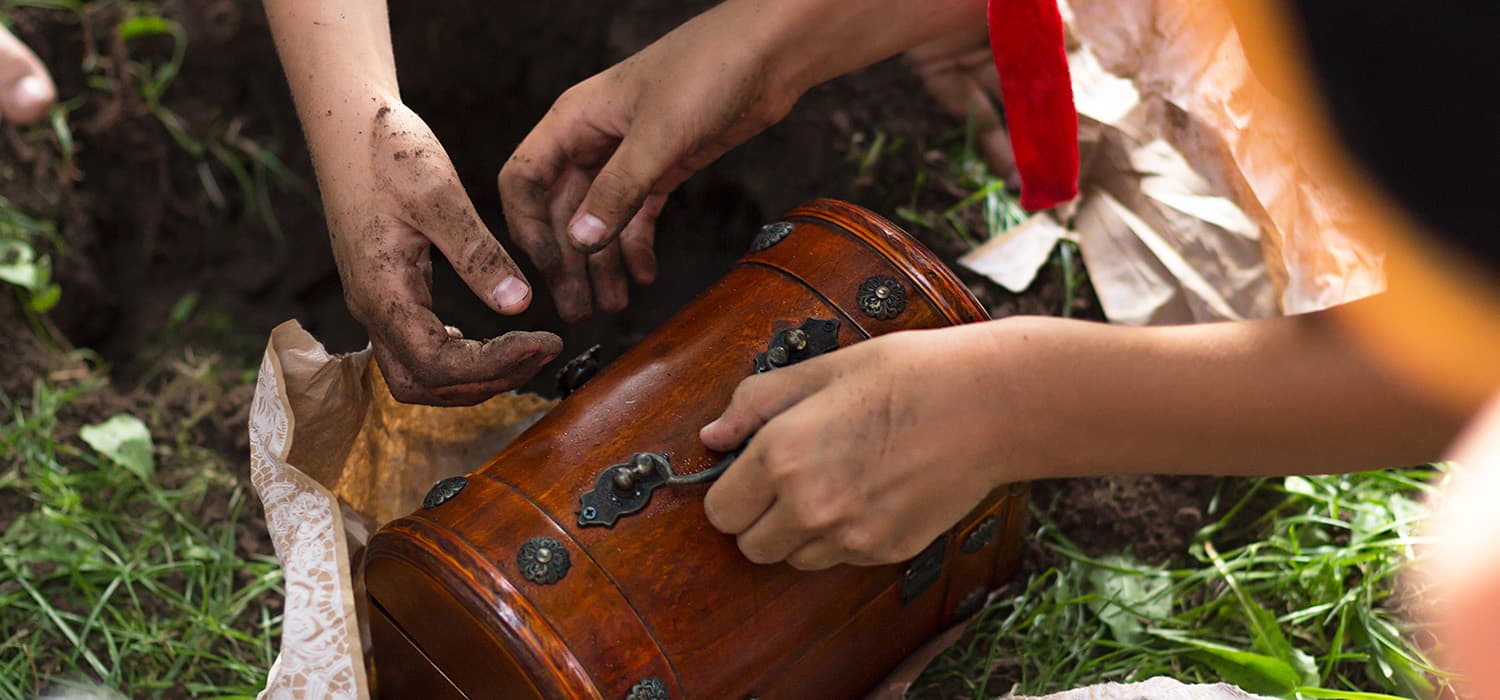What would you like future historians to know about you? Build a time capsule and tell them!
One day in the future, historians will want to learn all about today. What kind of clothes did we wear? What toys did we play with? What did we enjoy doing? What challenges did we face? This activity is your opportunity to give them some clues. Work with an adult to build a time capsule with items that tell your story. Just follow the instructions below, and you’ll be providing the historians of the future with the history of today.
Step 1: Make your time capsule case
Step 2: Pick your objects
Step 3: Hide your time capsule
Step 4: Document its location and make a map
Step 1: Make your time capsule case
To begin, you will need a case to store your items. The bigger the case, the more you can put inside. But remember, some materials are more likely to be damaged than others — especially if they are being stored for a very long period. So, it is important to choose or make a case that will keep your items safe and dry.
Ask yourself, what materials do you think will keep moisture out? What materials will last a long period of time? What materials are less likely to break? Would sealing your case shut help, and if so, how?
Tip: Some good household options that you can use as a case are Nalgene water bottles and empty vitamin containers. These items are usually made with polyethylene or polypropylene and have tight fitting screw top lids. Take a look at the bottom of these objects. If there’s a recycling symbol with the number 1, 2 or 5 inside, you’ll know you’ve got the right material.
Step 2: Pick your objects
Now for the fun part! Pick the things you want to put in your time capsule. Remember that you will want to choose objects that will tell future generations a little bit about you, and your life today.
Ask yourself, what items will last a long time? Will some pieces of technology be usable in the future (e.g., USB keys)? What stories do the items tell?
Tip: Be careful with what you choose. Over time, rubber and PVC plastics can break down and emit gases that can be harmful to other items in the capsule. Also, wood, hair and wool can emit gases that corrode metal objects, so store these materials in a polyethylene Ziploc bag.
Step 3: Hide your time capsule
It’s time to hide your capsule! Try and find a spot that will make the time capsule a surprise for whoever finds it.
Tip: Choose a spot that is safe, dry, cool and dark, especially if your case is made of cardboard or another porous material. Avoid basements and attics, and keep your capsule away from radiators and vents.
Step 4: Document its location and make a map
It’s a good idea to document your time capsule’s location — write it down somewhere, or make a map! Remember, ‘X marks the spot.’
